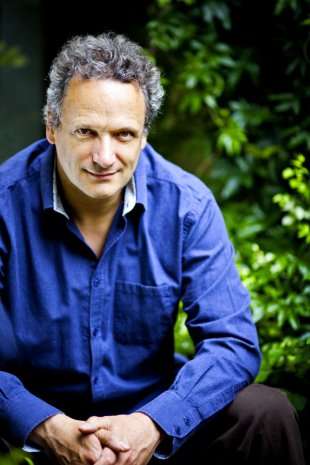|
Back
Mostly Mozart travels to the Mysterious East New York
Alice Tully Hall, Lincoln Center
08/10/2012 -
Witold Lutoslawski: Muzyka Źalobna
Béla Bartók: Piano Concerto No. 3, BB127
Wolfgang Amadeus Mozart: Symphony No. 39 in E flat major, K. 543
Jean-Efflam Bavouzet (Pianist)
Mostly Mozart Festival Orchestra, Louis Langrée (Conductor)

L. Langrée (© The Cincinnati Orchestra)
Perhaps it’s time for “Mostly Mozart”–both the name of the Festival and the Festival Orchestra–to change monikers, perhaps to “Mozart et Al” or “Lotsa Mozart”. Because last night’s concert was typical of their programs this summer under Louis Langrée. The finish was a good Mozart symphony. But before that, the orchestra went to the nether stratosphere of 20th Century Eastern European music, with some stunning results.
They began with that early essay in music palindromics, Witold Lutoslawski’s Funeral Music, which, while composed for the tenth anniversary of the death of Béla Bartók, is anything but funereal. It begins solemnly and softly enough, with a series of canons, becoming more and more complex, but then climaxes with a stunning fff series of chords which envelop the entire orchestra.
The question here is of balance, and conductor Langrée used his relatively small string consort (34 in all) with restraint and transparency up to that climax. To me, the magnificence of Funeral Music is the other end of the palindrome, when the entire orchestra shrinks down to the final notes in the cello. In a way, it was like a trick, but Mr. Langrée worked the magic, and provided a whole piece which was mesmeric to hear.
I’m unsure how much of the audience was familiar with the Lutoslawki, but Alice Tully Hall’s auditorium and stage were packed with enthusiastic listeners.
The Bartók Third Concerto, like Shakespeare’s Tempest is religious, mystical and above all, mystical, befitting the artists’ advanced years. The concerto served a double purpose. This “Mostly Mozart” festival is also devoted to bird music (and bird walks and, for all I know, pheasant dinners), so Bartók’s second movement homage to the birds of North Carolina, where he was staying at the time, was most appropriate.
That second movement, the centerpiece of the work, was not given the mystical treatment at all. In fact, Mr. Langrée, by offering it a bit up-tempo, made it so very very American (albeit written by a “furriner”). Delius or Dvorák could have penned the same introduction, which was amiable, light, with pastel tone-colors. Far from the usual “night music”, this could have been music for the dawn. Absolutely gorgeous.

J.-E. Bavouzet (© Paul Mitchell)
I had never heard Jean-Efflam Bavouzet live before, but his reputation preceded him. He suitably never allowed the delicacy of the movement to overlay a rich highly textured playing. The two outer movements were incisive, sharp, and pretty humorous.
Bartók might have had a lugubrious hangdog (and extremely beautiful) visage, but his music never lacked the razor-sharp Magyar wit.
Mozart’s 39th Symphony was played well, but–forgive the personal Philistinism–I would love to have heard the first two works repeated again, for their rarity and frequently rare playing.
Harry Rolnick
|